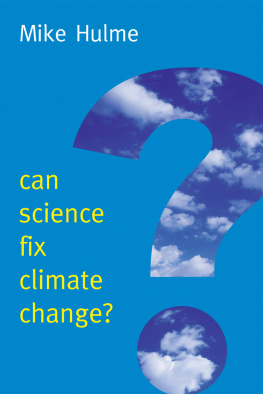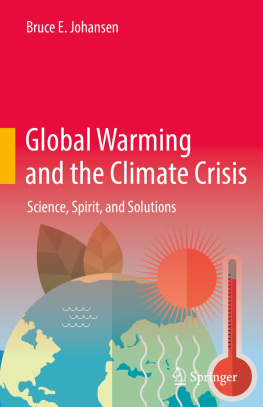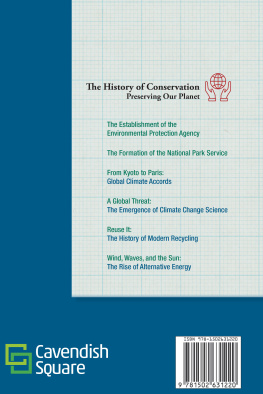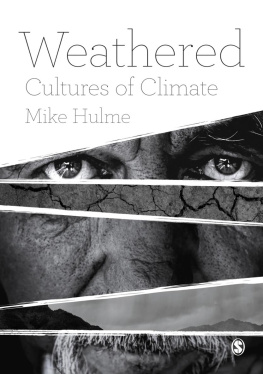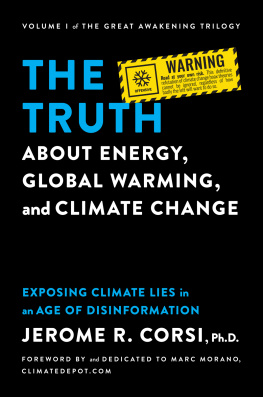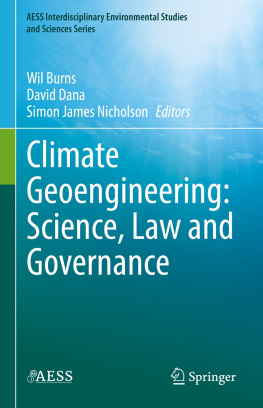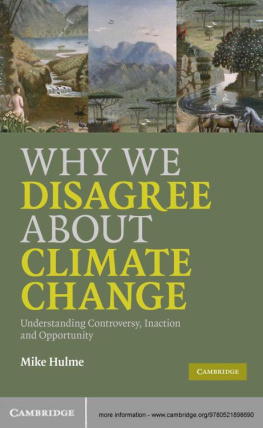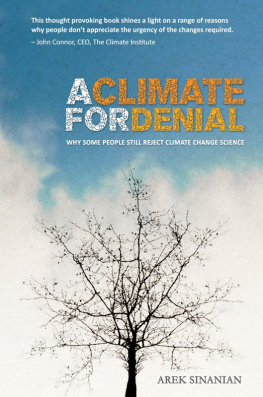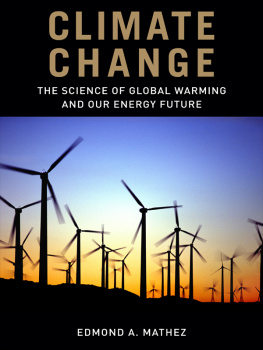
Table of Contents
New Human Frontiers series
Harry Collins, Are We All Scientific Experts Now?
Mike Hulme, Can Science Fix Climate Change?
Copyright Mike Hulme 2014
The right of Mike Hulme to be identified as Author of this Work has been asserted in accordance with the UK Copyright, Designs and Patents Act 1988.
First published in 2014 by Polity Press
Polity Press
65 Bridge Street
Cambridge CB2 1UR, UK
Polity Press
350 Main Street
Malden, MA 02148, USA
All rights reserved. Except for the quotation of short passages for the purpose of criticism and review, no part of this publication may be reproduced, stored in a retrieval system, or transmitted, in any form or by any means, electronic, mechanical, photocopying, recording or otherwise, without the prior permission of the publisher.
ISBN-13: 978-0-7456-8205-1
ISBN-13: 978-0-7456-8206-8 (pb)
ISBN-13: 978-0-7456-8526-7 (epub)
ISBN-13: 978-0-7456-8525-0 (mobi)
A catalogue record for this book is available from the British Library.
The publisher has used its best endeavours to ensure that the URLs for external websites referred to in this book are correct and active at the time of going to press. However, the publisher has no responsibility for the websites and can make no guarantee that a site will remain live or that the content is or will remain appropriate.
Every effort has been made to trace all copyright holders, but if any have been inadvertently overlooked the publisher will be pleased to include any necessary credits in any subsequent reprint or edition.
For further information on Polity, visit our website: www.politybooks.com
Acknowledgements
I would like to thank my colleagues Martin Mahony, Rob Bellamy and Helen Pallet for reading and commenting on early drafts of this book, and also two anonymous readers of the full manuscript, who made valuable suggestions for clarification and improvement. For what remains I take full responsibility. At Polity I would like to thank Emma Longstaff for commissioning this title, Manuela-Maria Tecusan for her meticulous copy-editing and the production and marketing team, especially Neil de Cort, Elen Griffiths and Ginny Graham. The index was compiled by Bill Johncocks, who, as always, performed the task with great professionalism and diligence.
Acronyms
| CDR | carbon dioxide removal |
| ENMOD | the Environmental Modification Convention |
| EPSRC | the Engineering and Physical Sciences Research Council |
| ETC | the Erosion, Technology and Concentration action group |
| IPCC | Intergovernmental Panel on Climate Change |
| SPICE | Stratospheric Particle Injection for Climate Engineering project |
| SRM | solar radiation management/sunlight reflection methods |
| UNESCO | the United Nations Educational, Scientific and Cultural Organisation |
| UNFCCC | United Nations Framework Convention on Climate Change |
Preface
Between 1997 and 2009 the belief persisted among most world leaders that climate change was a problem that could at least be contained, if not completely solved. In December 1997 the Kyoto Protocol was signed at the 3rd Conference of the Parties to the United Nations' Climate Convention, committing industrialised nations to reduce their greenhouse gas emissions by 5 per cent over the next 15 years. The senior British political negotiator John Prescott famously declared: This is a truly historic deal, which will help curb the problems of climate change. Yet 12 years later, in December 2009, the hope of reaching a fair, ambitious and binding follow-on deal at the 15th Conference of the Parties in Copenhagen ended in failure, rancour and disillusionment. The multilateral negotiating process now moves to the 21st Conference of the Parties in Paris in December 2015, where the nations of the world have agreed, yet again, to sign a treaty that should commit all nations to start reducing emissions by 2020. Few are holding their breath.
Yet the risks associated with anthropogenic climate change continue to be encountered somewhere between our direct experience of the world and our science-fuelled imaginations. As global emissions of greenhouse gases especially carbon dioxide have soared in the 17 years since the Kyoto Protocol was negotiated, ocean heat accumulates, Arctic sea ice shrinks, heatwaves intensify, the ocean acidifies and sea level rises. Curiously, however, global air temperature the favoured headline indicator of climate change has barely increased. The warming trend in global surface air temperature between 1970 and 1998 was 1.7C per century; between 1998 and 2012, just 0.4C per century. At the very least, this suggests that knowledge of the complete dynamics of the planetary system is not yet complete.
Yet there are few concerns in the world today that can match the global salience and cultural reach of climate change. After more than a quarter century of scientific investigation, public debate, political negotiation and policy development, climate change and its contested causes remain for many although not all a hot-button issue. All of human life is now lived out not just in the presence of a physically changing climate, but in the new discursive and cultural spaces that have been created by the idea of climate change. It is as though all human practices and disputes now can be now have to be? expressed through the language and symbolism of climate change.
So photography, cartoons, poetry, music, literature, theatre, dance, religious practice, architecture, educational curricula, and so on now use climate change as a medium of expression. Books dealing with climate change now appear at the rate of more than one per day in the English language alone, up from less than one per week a generation ago. And political disputes about landscape aesthetics, child-rearing, trade tariffs, theology, patents, extreme weather, justice, taxation, even democracy itself, find themselves inescapably caught up in the language and argumentative spaces of climate change. Climate change has become a new condition around which human life takes shape; we feel there might not be any narrative whose meaning we cannot re-evaluate in relation to climate change.
So here is the paradox of climate change. While worldwide awareness of climate change as a matter of concern has grown during these last two decades, there remain few problems that are as politically intractable. Top-down multilateralism orchestrated through the United Nations the so-called Plan A has abjectly failed to reign in global emissions of greenhouse gases. And politically and culturally engineered behavioural changes within nation states have brought about only marginal adjustments to the underlying drivers of energy consumption and land use change. The world's expanding energy supply continues to be drawn mostly from fossil fuel sources, and the growth in material consumption was only halted temporarily by the global recession of 200910.
If neither global diplomacy nor changes in human behaviour can solve climate change, a new argument is now being advanced: the world needs a Plan B for regulating climate and, more importantly, science and technology can deliver one. By intervening directly in the heat flows from the sun to the Earth's lower atmosphere, it is deemed possible by some that a thermostat for the planet could be created. The plausibility of this global thermostat relies upon innovative atmospheric modification technologies, guided by reliable scientific knowledge of how the planet's climate works. The most frequently advanced intervention would involve injecting millions of tonnes of sulphur gas into the high atmosphere so-called stratospheric aerosol injection, just one in a family of sunlight reflection methods. Climate control would then become possible not just for our cars, our buildings and our homes but it is claimed for the planet as well.
Next page
